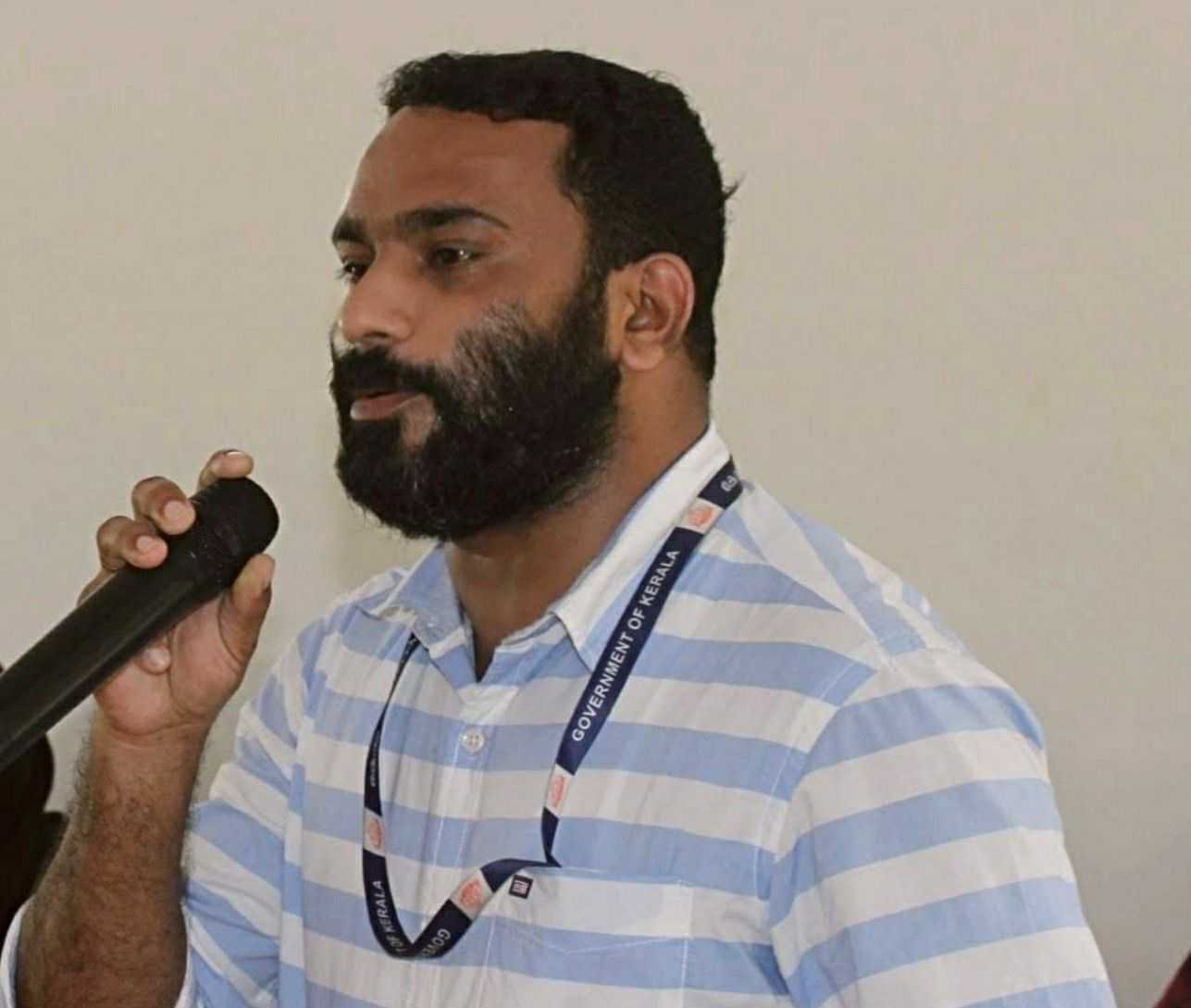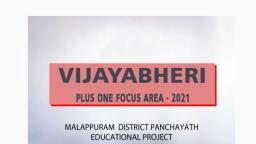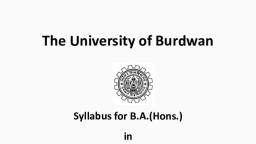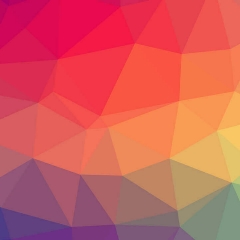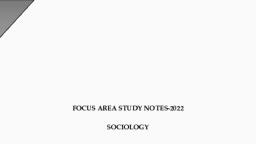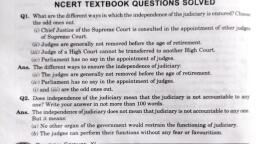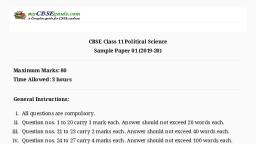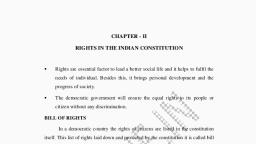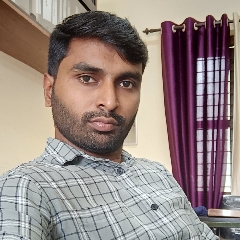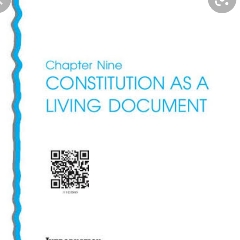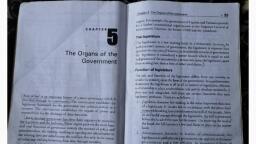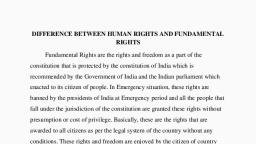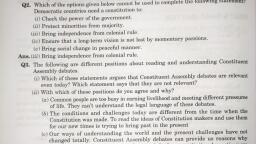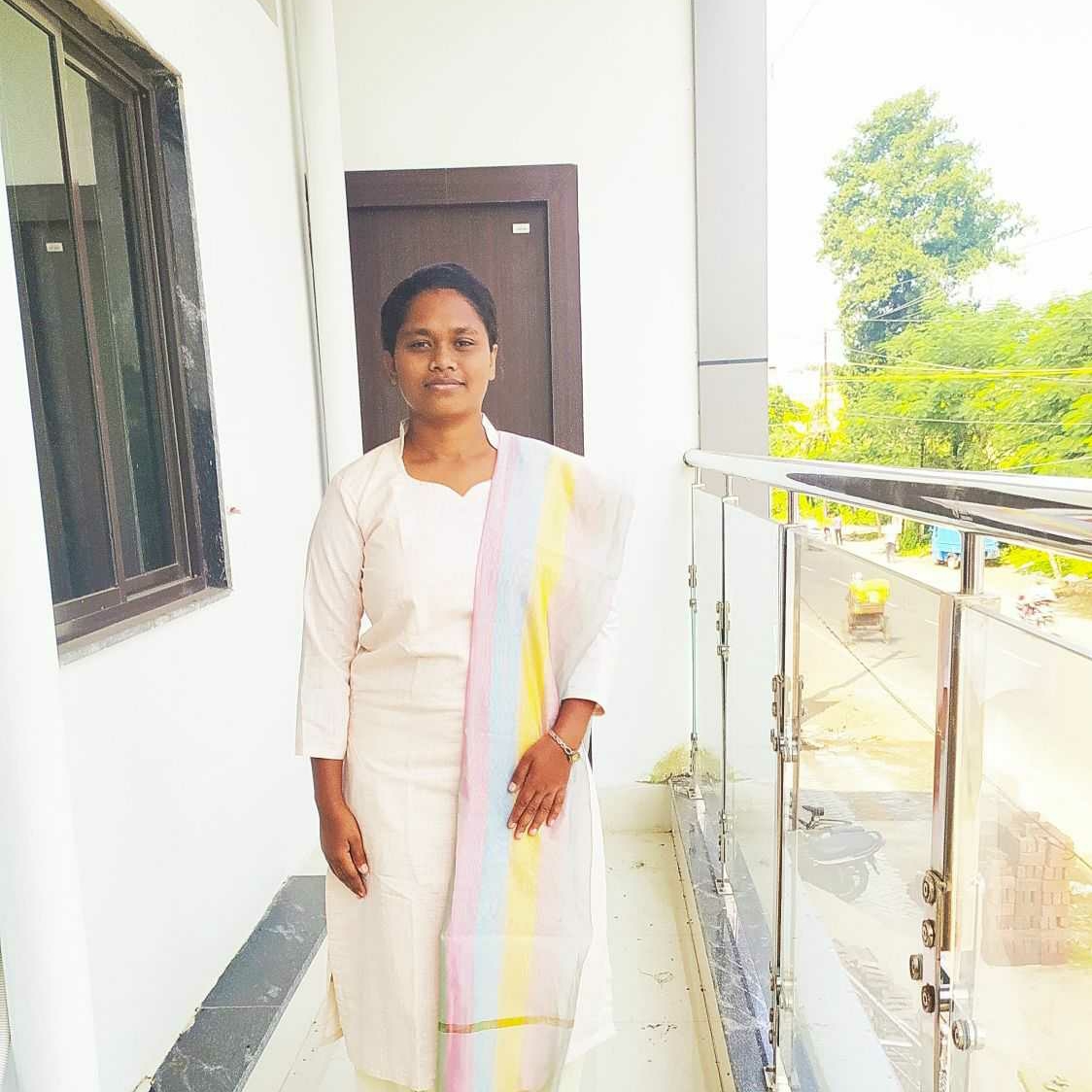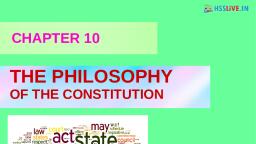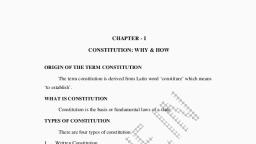Page 1 :
XI POLITICAL SCIENCE, FOCUS AREA NOTES
Page 2 :
1. CONSTITUTION : WHY AND HOW?, Constitution is a compact document that comprises a number of articles, about the state, specifying how the state is to be constituted and what norms it should follow., FUNCTIONS OF THE CONSTITUTION, 1. CONSTITUTION ALLOWS COORDINATION AND ASSURANCE - The first, function of a constitution is to provide a set of basic rules that allow minimal coordination, and assurance amongst members of a society. Constitution helps to overcome the problem of, diversity and enable the people to live peacefully. Constitution enforces same rules for all the, members., 2. SPECIFICATION OF DECISION MAKING - The second function of a constitution is, to specify who has the power to make decisions in a society. A constitution is a fundamental, body of principles according to which a state is constituted or governed. Constitution, Specifies the basic allocation of power in a society. Powers of different organs of the, government are clearly defined in the constitution, 3. LIMITATIONS ON THE POWERS OF THE GOVERNMENT- The Third function of, the constitution is to to set some limits on what a government can impose on its citizens., Constitution restrict the powers of the government, to protect the, basic rights of, individual., 4. ASPIRATIONS AND GOALS OF A SOCIETY- The fourth function of the constitution, is to enable the government to fulfil the aspirations of a society and create conditions for just, society. Modern constitutions contains a number of positive measures to, overcome forms, of inequality and to ensure the welfare of the society., 5. FUNDAMENTAL IDENTITY OF PEOPLE - Constitution expresses the fundamental, identity of a people. Constitution is helpful to sideline regional, linguistic and communal, identities and to create a national identity. The Constitution also helps in inculcating political, and social values among the citizens., , Provisions Borrowed from Other Constitutions, British Constitution - Parliamentary system, FPTP system, Rule of law, Institution and, powers of speaker, Law making procedure, American Constitution - Fundamental rights, Judicial review, Independence of the, judiciary, Irish Constitution - Directive Principles of State Policy, French Constitution - Principles of Liberty, Equality and Fraternity, Canadian Constitution - Semi-federal system, Residual powers
Page 3 :
2. Rights in the Indian, Constitution, The special rights granted and protected by the government are, enshrined in the constitutions of democracies. These special rights are called, fundamental rights. The demand for fundamental rights for Indians was strongly, raised during the freedom struggle. The Motilal Nehru Committee of 1928, strongly supported this demand. There was no two opinions on inclusion of, fundamental rights should in the Constitution during the drafting of the, Constitution., , Differences between Fundamental Rights and Ordinary Rights, Fundamental Rights, Ordinary Rights, Protected by the Constitution., Protected by the ordinary law., It can only be changed by amending It can be changed through ordinary, the Constitution., legislation., , Fundamental Rights in the Constitution of India, Part 3 contained seven fundamental rights in the original, constitution . In 1978, the number of fundamental rights redused to six., 1. The Right to Equality - In order to eliminate the social inequality that, existed in India, the Constitution enshrined the right to equality before the law,, equal protection of the law, protection from discrimination on the basis of gender,, religion, region, language and gender, abolition of untouchability, equal, educational and employment opportunities., 2. The Right to Freedom - The right to life and liberty are included in the list, of fundamental rights. The Constitution guarantees freedom of expression,, freedom of assembly, freedom of association, freedom of movement, freedom of, residence and freedom of employment. The Constitution sets out the procedures, to be followed at the time of arrest and the rights of the accused. The government, has the power to detain potential criminals in preventive detention. Those who, are likely to engage in anti-social and anti-national activities can be detained for, up to 3 months without trial., 3. The Right against Exploitation - The right against exploitation is, enshrined in the Constitution to protect the weaker sections of the society. This, right helps to prevent slavery, human trafficking, begar or forced labour, child, labour and the exploitation of women., 4. The Right to Freedom of Religion - In a secular country like India, all, citizens have freedom of religion. Citizens have the right to profess, follow and
Page 4 :
propagate their religion. The Constitution also allows a citizen to, live without believing in any religion. But religious practices that affect law and, order, morality and public health are not allowed in India. The practice of, reserving government posts for any particular religion does not exist in India. The, Constitution also prohibits the provision of religious education in government, institutions., 5. Cultural and Educational Rights of Minorities - The fifth, fundamental right is the protection of the cultural and educational rights of, minorities in India. Cultural and linguistic minorities in India have the right to, preserve their language, script and culture., 6. Rights to Constitutional Remedies - The sixth fundamental right is the, right of the citizen to approach the Supreme Court or the High Court in case of, denial of fundamental rights. Dr B R Ambedkar described the right to, constitutional remedies as the ‘soul and heart of the Indian Constitution’., Orders issued by a court for the restoration of fundamental rights are known as, writs. Five writs are mentioned in the Constitution of India., 1. Habeas corpus - The habeas corpus is an order issued to release a citizen from, illegal detention. Habeas corpus literally means "produce the body"., 2. Mandamus - The word mandamus means ‘we command’. Mandamus is court, order to any government office, subordinate court or public authority to do some, specific act which that body is obliged under law to do., 3. Prohibition - This is an order issued to the lower courts preventing them from, interfering in matters outside their jurisdiction., 4. Quo Warranto - Quo Warranto means ‘by what authority’. Quo Warranto is a, court order issued to restrict a government official from holding a position he is, not entitled to hold., 5. Certiorari – Certiorari means ‘to be informed’. It is an order to transfer a case, from the lower court to the upper court., , Right to Property, Right to property was removed from the list of fundamental rights by, the 44th Amendment in 1978 and converted to an ordinary right.
Page 5 :
3. Election and Representation, First Past the Post System (FPTP System) & Proportional, Representation, Features of the FPTP system, -, , Country is divided into smaller constituencies., Every elects one representative., Voters votes for a candidate., A Party may get more seats than votes tin the legislature., Majority of votes is not needed to win the election., , Features of the Proportional Representation system, -, , Country is divided into a single constituency or a few large constituencies., More than one representative may be elected from one constituency., Voters votes for the party., Every party gets seats in the legislature in proportion to the, percentage of, votes that it gets., Majority of votes is needed to win the election., , Functions of the Election Commission, -, , Prepare and up-to-date voters’ list., Determine the election schedule., Develop a model code of conduct., Postpone the election in case of emergency., Take necessary precautions in problematic areas., Cancel the election in a particular polling booth or constituency., Order re – poll where irregularities have taken place during election time., Order recount if dispute arises., Accord recognition to political parties and allots symbols to political parties., , Electoral Reforms, India has one of the best electoral systems in the world. But the Indian electoral system is, also not perfect. Below are some suggestions that can be taken to improve the Indian, electoral system., 1., Change the electoral system in India to proportional representation., 2., Implement women reservation., 3., Strict provisions to control the role of money in elections., 4., Bar candidates with criminal background., 5., Complete ban on caste and religious appeals in the election campaigns., 6., Make laws to ensure the functioning of political parties is transparent and democratic. .
Page 6 :
4. EXECUTIVE, , The powers of the government are divided into three organs: the Executive, the, Legislature and the Judiciary. The main responsibility of the executive is to implement policies, and laws approved by the legislature., , PARLIAMENTARY EXECUTIVE IN INDIA, The Constitution of India prescribes a system of parliamentary executive at Center and State level., The Central Executive comprises the President, the Vice President, the Prime Minister, the Cabinet, and the Bureaucracy. The State Executive comprises the Governor, the Chief Minister, ministers and, government officials., , Reasons to adopt Parliamentary system, 1. Familiar System - During the British period, there was a form of parliamentary system, existed in India., 2. Responsible Government - The parliamentary system is more responsible to the people, and the parliament., 3. Prevents Despotism - There is less chance of personal worship and dictatorship in the, parliamentary system., , The PresidentThe President is the Head of the Indian State . He is also known as India's first citizen. Dr., Rajendra Prasad was the first President of India. The current President of India is Ram Nath, Kovind., Election of the President - The President is elected by an Electoral College which, consists of elected Members of Parliament and State Legislatures. President is elected for a, term of 5 years., Impeachment - The President can be removed from office only through impeachment., The President can be released only if there is a special majority in Parliament. The President, can only be impeached if he violates the Constitution., , Powers of the President –, President has major powers in a parliamentary system. These powers are in reality, used by the president only on the advise given by the Cabinet . The following are the major, powers that the President can exercise in accordance with the decision of the ruling party:, Appointment of Prime Minister and other ministers., Summons the Parliament. Nominates 12 members to Rajya Sabha and 2 members to Lok Sabha., Appoints judges of Supreme Court and High Courts., Acts as Commander – in- Chief of the Indian Armed Forces., , Discretionary Powers of the President, The power of the President of India to take independent decisions in, certain circumstances is known as discretionary powers. The President can exercise his, discretion in three different situations., 1., The advice given by the Cabinet may be returned for reconsideration. The President is, obliged to accept the Cabinet decision if it returns again without modification., 2., The bills passed by Parliament may be returned for reconsideration. He can also
Page 7 :
withhold the bill. President's possession of a without giving assent is known as, pocket veto. The President is obliged to sign the bill if it is submitted to the President's again, with or without change., 3., If no political party has a clear majority in the Lok Sabha elections, the President may, use his discretionary power to select the Prime Minister., , The Prime Minister, The Prime Minister is the head of the government and cabinet . Prime Minister, is appointed by the President. The Leader of a majority party in the Lok Sabha is appointed, as Prime Minister. If no political party has a clear majority in the Lok Sabha elections, the, President can use his discretionary power to choose the Prime Minister. The major powers of, the prime minister is given below :, 1., Advise the President, 2., Select the Ministers, 3., Allocate the rank and portfolio of ministers, 4., Act as a link between the President and the Cabinet., 5., Decide the policies of the government., 6., Represent the country in international platforms, , Bureaucracy, The bureaucracy is a bureaucracy that helps ministers to formulate and implement, policies. Government officials should not take active political action. The following are some, of the key differences between a political executive and a permanent executive., , The Indian Civil Service is divided into three categories., All India Service - The All India Service is comprised of personnel working under the, Central Government and the State Governments. The existing three all-India services are the, Indian Administrative Service, the Indian Police Service and the Indian Forest Service., Central Service - Officers who work only under the Central Government are part of the, Central Service. Indian Foreign Service, Indian Railways and Indian Revenue Service are, examples of central service., State Service - Officers working only under the State Government, State Sales Tax, Officers and State Civil Service are part of the State Service., The Union Public Service Commission elects the officers of the All India Service and, the Central Service. The officers of the State Service are also appointed by the Public Service, Commission of the State., , Criticisms against bureaucracy, -, , The public is unable to approach many government officials., Many government officials are not interested in public issues., The needs of the public are often not met on time., There are corrupt people in the bureaucracy., There are situations where officials cannot function independently due to political, interference.
Page 8 :
5.LEGISLATURE, Legislature is the law making body of the government. Legislature is, the centre of all the democratic process. Parliament is the national legislature of India. Indian, parliament has two houses. Rajya Sabha and the Lok Sabha are the two houses of Indian, Parliament., , Special Powers of the Lok Sabha, , 1. Money bills are first introduced in the Lok Sabha. Only Lok Sabha has the power to reject, the money bills., 2. No-confidence motion against the central government can be introduced only in the Lok, Sabha. So only Lok Sabha has the power to overthrow the central government., , Special Powers of the Rajya Sabha, , 1. The approval of Rajya Sabha is required to shift an item from State list to the Union List or, to the Con Concurrent List., 2. Any resolution seeking the creation of all India services can only be initiated in the Rajya, Sabha., , Law Making in the Indian Parliament, , Law making is the basic function of the Parliament. Preparation of bill is the, initial stage of law making. Bill is a draft of the proposed law., , Types of Bills, , 1. Government Bill - Government bill is introduced by the minister. Usually the bill is, prepared by the concerned ministry., 2. Private Members Bill -Private member’s bill is introduced by a non minister. Opposition, parties initiates the preparation and introduction of private members bill., , Stages of Law Making, , 1. Debate on the need of new legislation _Political parties, interest groups, media and, citizens’ forums discuss about the need of new legislation., 2. Preparation of the Bill _Government bill is prepared by the concerned ministry., Bureaucrats play an active role in the preparation of bills., 3. First Reading - Bill is introduced either in Lok Sabha and or in Rajya Sabha by a member., No discussion takes place after the first reading., 3. Committee Stage - Bill is forwarded to the committee for detailed study. Committee can, make needed changes in the bill., 5. Second Reading - Bill, after the modifications done by the committee , is read in the, Parliament., 6. General Discussion -Every provision of the Bill is debated and voted on in Parliament., 7. Third Reading -The final version of the bill is presented in the House. At this stage, no, changes take place., 8. Bill in the Other House – If a bill is passed by one house , it is sent to the other House, where it goes through exactly the same procedure., 9. Assent of the President - When a bill is passed by both Houses, it is sent to the President, for his assent. The assent of the President results in the enactment of a bill into a law., Joint Sitting of the Parliament – If there is a disagreement between the two Houses on the, proposed bill, attempt is made to resolve it through Joint Session of both houses of the, Parliament.
Page 9 :
Parliamentary control over the Executive, , Following are the main tools used by the Parliament to control the executive., 1. Deliberation and Discussion - Parliamentarians get enough chances to evaluate and crticise, the functioning of government. Question hour, zero hour, half an hour discussion adjournment, motion etc are the important instruments of exercising control. Members can collect, information on various social issues by asking questions. It force the ministers to perform their, duties in a more responsible manner., 2. Approval and ratification of laws - A bill can become law only with the approval of the, Parliament. A government with a clear majority has no difficulty to get the approval of the, Parliament in law making. But a coalition government or government which is minority in, Rajya Sabha will be forced to make compromises and concessions during law making., 3. Financial Control - Parliament has the power to approve and reject the budget. Parliament, can control the executive by discussing the reasons for which the government requires money., Parliament can enquire the misuse of government fund. Government policies are also discussed, during budget session., 4. No confidence Motion - No confidence motion is the most powerful instrument of, parliamentary control over the executive. Opposition parties get a good chance to discuss the, performance of the ruling party. Cabinet has to resign if the no confidence motion is supported, by the majority of Lok Sabha members., , 6. JUDICIARY, Judiciary is the third organ of government. Main duty of the judiciary is to resolve, disputes and enforce justice. Judicial system in India consists of the Supreme Court at the top, and the 21 High Courts below the Supreme Court and many District Courts and other lower, Courts at the bottom level. The Supreme Court of India was inaugurated on the 26th of, January,1950., , Independence of the Judiciary, The Constitution of India provides the following provisions for the judiciary to, function independently without the influence of Parliament or the Cabinet., 1., The President appoints judges of Supreme court and High Courts., 2., Judges can stay in office until retirement age. Judges can only be, dismissed, through a difficult process called impeachment on grounds, of violation of, constitution or proved misbehavior., 3., Reduce the possibility of corruption among the judges by providing better pay and, other financial incentives., 4., Neither Parliament nor the public has the right to criticize the actions, and, verdicts of judges. It helps the judges to work without fearing the criticism., 5., Retired judges are not allowed to practice as lawyers., , Jurisdiction of the Supreme Court, 1. Original Jurisdiction -The Supreme Court directly deals with cases between the, Central Government and the State Government and between the State Governments. Such, cases are considered as the Original Jurisdiction because these cases are originated in the, Supreme Court.
Page 10 :
2. Appellate Jurisdiction -Individuals and institutions can appeal to the, Supreme Court against the High Court ruling in civil and criminal cases., 3. Writ Jurisdiction - Individuals can approach the Supreme Court for the restoration of, their fundamental rights. The Supreme Court has the power to issue five different types of, orders, writs , to protect the fundamental rights., 4. Advisory Jurisdiction - The President can seek legal advice from the Supreme Court, on matters relating to the state. The President is not obliged to accept the legal advice from, the Supreme Court., , 7. FEDERALISM, India adopted federal system of government. Indian federal system, consists of one central government and several state governments., , The Division of Powers, The powers of the Central Government and the State Governments are, very clearly described in the Constitution of India. Economic powers and other major powers, are vested with the central government. The powers of the government are divided into three, lists: the Union List consisting of 99 subjects under the authority of the Central Government,, the State List containing the 61 subjects under the authority of the State Government, and, the Concurrent List containing the 52 subjects under the authority of both the Central, Government and the State Government. Decisions on the subjects in the Concurrent List can, be taken by the Central Government and the State Government. But if there is a disagreement, between the central and state governments, the decision of the central government will, remain., , UNION LIST, , STATE LIST, , CONCURRENT LIST, , Defense, , Agriculture, , Education, , Atomic energy, , Police, , Forests, , Foreign affairs, , Prison, , Trade unions, , War and Peace, , Local governments, , Adulteration, , Banking, , Public health, , Adoption and succession, , Railways, , Livestock and Animal, husbandry, , Transfer of property other than, agricultural land, , Post and Telegraph, , Liquor, , Airways, , Trade and Commerce, , Ports, , Land, , Foreign trade, , State public service, , Currency and Coinage, The Central Government has been given residual powers which are not included in all three, lists. Example – Cyber Laws.
Page 11 :
Federalism with a Strong Central Government, The Indian federal system gives more powers to the central government . The reasons for, giving the central government more power are as follows., 1., To maintain the unity of India., 2., To ensure the socio - economic development of the country., , The major provisions that strengthen the central government, 1., 2., 3., 4., 5., 6., 7., 8., , The central government has the power to create new states and to change the, boundaries and names of the states., The central government has the power to declare an emergency., The Central Government can dissolve the State Government and directly control, the States by imposing presidential rule., The central government has the authority over financial matters. It is the central, government that passes the budget and decides the financial allocation of the states., The Governor who is the representative of the Central Government has the right, to interfere in the activities of the State Government., The Rajya Sabha is empowered to change a subject from the State List to the, Union List., States cannot take disciplinary actions nor remove the officers in all India services., The Parliament is authorised to protect the persons in the central or state service in, respect of any action taken by them during martial law to maintain or restore order., , 8. LOCAL GOVERNMENTS, In 1989, the PK Thungon Committee recommended constitutional, recommendation to local government bodies. Committee also suggested uniform structure,, periodic election and more powers to the local government. On the basis of this, recommendation, the Indian Parliament passed 73rd and 74th constitutional amendments., , 73rd Amendment to the Constitution, The 73rd Amendment refers to local governments in rural areas or Panchayati Raj Institutions., The following are the major changes brought by 73rd Amendment., 1. Three Tier Structure -A three-tier panchayat system consisting of Gram Panchayat,, Block Panchayat and District Panchayat should be implemented in all states. It also proposed, the formation of a Gram Sabha consists of all adult members registered as voters in the, Panchayath area., 2. The election - The panchayat members are directly elected by the people. The term, of, panchayats is five years., 3. Reservation – 50% of Seats in panchayat institutions are reserved for women. Reservation, for Scheduled Caste and Scheduled Tribes are also provided., 4 .Transfer of Subjects -29 subjects under the jurisdiction of the state government were, transferred to the local governments., 5. State Election Commissioner -Elections to Panchayati Raj institutions are conducted by, the State Election Commission., 6. State Finance Commission - The State Government is required to appoint a Finance, Commission every five years to check the financial position of the local governments and to, transfer necessary funds.
Page 12 :
9., CONSTITUTION AS A LIVING DOCUMENT, The laws need to be changed according to the changing circumstances., Countries such as the Soviet Union and France have changed the entire constitution many, times to meet the changing needs. It is a matter of pride that the Constitution of India, which, came into existence on January 26, 1950, remains in existence for over 70 years. The, Constitution of India continues to be a valid document after 70 years, through periodic, renewal and judicial interpretation., , Types of Constitutional Amendments, Parliament has the power to change the Constitution of India. The Constitution of, India can be changed in three different ways., 1. Amendments with simple majority. - Some of the provisions of the Constitution can be, changed with the supportof the majority of members who vote in the Rajya Sabha and Lok, Sabha. The provisions related to the renaming of the states, the formation of the state, and, the matters of citizenship etc can be amended with simple majority., 2. Amendments with special majority - Some of the provisions of the Constitution require, a special majority of Parliament. The special majority means of the support of two-thirds of, those who vote in the House and the majority of members of the House. It is in this way that, fundamental rights and instructional principles are altered., 3. Amendments requiring the a special majority of the parliament and ratification of, half of the states - Some of the provisions can be changed with the special, majority of the parliament and the ratification of half the states. Articles related, to distribution of powers between the states and central government ,, representation etc are included in this category., , 10. THE PHILOSOPHY OF THE CONSTITUTION, Criticisms against the Indian Constitution, 1. Unwieldly -The Constitution of India is the largest Constitution in the world. Some people, point it as a flaw. Its a baseless argument. There are more than one legal documents in, countries with smaller constitutions. But all the major laws in India are included in the, Constitution. This is the main reason for the large size of the Constitution., 2. Unrepresentative -Most of the members of the Constituent Assembly were from the, upper castes upper classes. There were also allegations that representatives of the common, people were not included in the Assembly. Its not correct. Members raised matters not based, on their individual social concerns but based the interest of different sections of society., 3. Alien document – The final criticism is that the Indian constitution is an imported, document. The allegation is that the Constitution of India is made up of ideas borrowed from, western constitutions. Its not a true argument. The Constituent Assembly borrowed only, good ideas from the western Constitutions. These ideas were adapted to suit the Indian, conditions., , Limitations of Indian Constitution., 1. The Constitution of India has a centralised idea of unity., 2. The Constitution does not cover important matters like gender justice within the family., 3. Some of the prominent social and economic rights are not included in the list of, Fundamental Rights.
Page 13 :
11. Political Theory – An, Introduction, Political Science is a branch of social science that studies, the state and the government. The word politics is derived from the Greek word, ‘polis’ which means city state. The Greek philosopher Aristotle is known as the, father of political science. Ideas like freedom, equality and secularism also come, into the scope of political science., The Importance of the study of Political Theory, 1. Relevant on many professions - Political theory is relevant for many, professions like politicians, lawyers, judges , journalists etc to perform their, duties more effectively., 2. Political Studies helps to learn the functions of the government –, Political science helps the students to learn about the functions of the various, organs of the government. Study of Political Science helps to create awareness, about the legal system of the country. Political Science also discusses the, importance and content of Constitution., 3. Awareness of Human Rights and noble ideals - The Importance of Human, Rights and Prevention of Human Rights Violations also come under the subject, matter of Political Science. Study of political theory also helps to create an, awareness about various ideals like freedom, equality, justice, secularism etc., 4. Systematic Thinking on Social issues - Political theory exposes us to, systematic thinking on justice or equality so that we can polish our opinions and, argue in an informed manner and for the sake of common interests., , 12. FREEDOM, In a simple sense freedom is the absence of constraints. In a broader sense, freedom is about to expanding the abilities of the people. Social constrains are justified in, every civilised society., The Harm Principle, Harm principle is introduced by J S Mill in his famous book ‘On Liberty’. According, to J S Mill, human actions are categorized as self regarding actions and other regarding, actions., Self regarding actions - If the consequences of one's actions only affect him / her, such, activities are classified as self-regarding actions. There is no need of the involvement of, society or government to deal these type of actions., Other regarding actions - If the consequences of one's actions are affecting others, then, such actions are considered other regarding actions. Such activities should be regulated by, the intervention of society and the nation. There is no need for legal action if one person's, actions create only minor difficulties for others. Such problems can be solved through social, criticism and rejection. Legal action must be taken if a person's actions cause serious social, problems.
Page 14 :
Negative Liberty and Positive Liberty, Negative Liberty - Negative liberty is the absence of external controls. It is the freedom to, do whatever one wants to do. All the human beings need a ‘minimum area of non –, interference’. Bigger the area of non interference the more the freedom. Negative liberty, discusses the idea of ‘freedom from’, Positive Liberty - Positive liberty ensures the proper condition for the individuals to, develop his or abilities. It is the duty of the government and the community to provide the, right situation. Negative liberty discusses the idea of ‘freedom to’, , 13. EQUALITY, Equality is a powerful idea which gives, equal respect and consideration to all the human beings. Equality, opposes discrimination in the name of religion, caste, colour, race,, economic status, gender or language., , The Dimensions of Equality, 1. Political equality - The democratic societies guarantee equal rights, to all its citizens. Political equality includes the right to vote, the right to, contest in elections, freedom of expression etc. Political equality, guarantees the participation of all citizens in the democratic process., 2. Social equality -Society should guarantee minimum condition of life, to all the members of the society. It includes health care, education,, minimum wage empowerment of women , reservation for the backward, classes etc. All sections of people should be respected in the society., 3. Economic equality -Differences in property and income creates, economic inequality. Even if absolute economic equality is not possible,, the government can take measures to reduce inequality between the, people. Democratic societies try to reduce the gap between rich and, poor by providing equal opportunity to all., , Ways to promote equality, 1. Establishing formal equality - All unnecessary restrictions on, political, social and economic rights should be brought, to an, end. Most of the modern constitutions contains provisions against, discrimination on grounds of religion, race, caste, sex or place of birth., 2. Equality through different treatment - Sometimes it is necessary, to treat people differently in order to ensure that they can enjoy equal, rights. It includes special care given to people with disabilities and, women., 3. Affirmative action - Affirmative actions are the positive measures, taken to minimise and eliminate entrenched forms of social inequalities., Scholarship and hostel facility to the weaker section and, reservation, system are examples of affirmative actions.
Page 15 :
14. Social justice, According to Immanuel Kant, a German thinker, social justice is a, condition whereby all people of a society can live with dignity and well-being., , The Three Principles of Justice, 1. Equal Treatment for Equals - All people have equal importance and equal rights in, society. The right to life, the right to freedom and the right to property etc are granted to all, citizens. The concept of justice states that individuals should be judged not on the basis of, their race, creed or colour, but on their actions., 2. Proportional Justice - It is not practical to treat everyone equally in all situations. It is, just to rewarding people in proportion to effort required, skills required, the possible dangers, involved and social relevance of each person's work., 3. Recognition of Special Needs - Particular attention is given to those who are physically, and mentally challenged, the elderly and the socially disadvantaged. It is only through such, protection that many of these groups are able to gain the rights and social status they deserve., The caste reservation inserted in the Constitution of India and the government's different, economic schemes to the poorer sections is part of the efforts by the state to bring social, justice to the common masses., , 15. Rights, Rights are the essential elements to lead a dignified life., Rights are recognised and enforced by the society. All human beings are entitled to the basic, rights such as the right to life, the right to freedom, the right to equality, the right to property, etc., , Different Types of Rights, 1. Political Rights, The right to vote, the right to contest elections and the right to form political parties are the, main political rights. Political rights force the government to act according to the interests of, the individual., 2. Civil Rights, The right to free and fair trial, freedom of expression and freedom to form organizations are, examples of civil rights. Democracy is based on a combination of political and civil liberties., 3. Economic Rights, The main economic rights are the right to basic amenities such as food, shelter and health,, the right to work, the right to rest, and the right to a reasonable wage. Only a person whose, basic economic needs are met can enjoy political and other civil rights., 4.Cultural Rights, Modern democratic states recognise the cultural rights of their citizens. The right to have, primary education in one’s mother tongue, the right to establish institutions for teaching, one’s language and culture are today recognised as being necessary for leading a good life.
Page 16 :
16. CITIZENSHIP, Citizenship guarantees protection and right to the individuals . There have, been many struggles to secure civil rights. The French Revolution, the independent struggles, in Asia and Africa, and the fight against apartheid are examples for such movements., , Ways to Earn Indian Citizenship, 1., 2., 3., 4., 5., , Citizenship by birth., Citizenship by descent., Citizenship through Registration., Citizenship by naturalisation., Citizenship by incorporation of territories., Universal Citizenship - Universal Citizenship is a vision of giving citizenship to all, who wish to gain membership in a country. Due to war, ethnic violence, natural disasters, and, famine, billions of people are fleeing to other countries. The countries refuse to grant, citizenship to all the refugees. Governments are keen on citizenship laws, fearing that, unauthorized access to refugees could adversely affect the country's security and economy., Global Citizenship- Global Citizenship is a broad view that every human being is a, member of a global community rather than citizen of a particular country. Contemporary, challenges such as terrorism, epidemics, natural disasters and the refugee problem cannot be, solved by any country alone. Such problems can only be solved through the collective effort, of the humanity. Globalization and the advancement in transport and communication have, helped to create greater closeness among the people., , 17. NATIONALISM, Nationalism is a form of patriotism based upon the identification of a group of individuals, with a nation. Creative nationalism unites people and makes them prosperous. But, destructive nationalism has led to the disintegration of many countries., , The factors contribute to the growth of nationalism., 1. Shared Beliefs - The nation is only strengthened when citizens believe that they are all, members of the same community. Citizens must have a common belief in unity, national, identity and national development., 2. History - Having a proud historical background will strengthen nationalism. Collective, memories, legends, great events, and great personalities can help to create patriotism in the, citizens., 3. Territory - Living together in a particular territory develops a feeling of oneness. Giving, various descriptions such as holy land, fatherland and motherland indicates closeness of, citizens to the territory of their state., 4. Shared Political Ideals - General political beliefs are another important factor which, strengthen nationalism. Belief in different ideologies, such as democracy, secularism and, liberalism inspires the people to stand together., 5. Common Political Identity - Common cultural background such as common language,, same religion, observing same celebrations and rituals etc enrich nationalism. But the, excessive emphasis on language and religion has led to the rise of separatist activities in, many countries.
Page 17 :
18. SECULARISM, Secularism is the idea of equal respect and opportunity for all, religions. Importance of secularism is growing in the contemporary world., The Western Model of Secularism, Following are the main ideas that the Western model of secularism proposes., 1. Mutual exclusion of state and religion., 2. State can not financially aid any religious institutions., 3. Religion is a private matter., 4. State supported religious reform is not encouraged., 5. Individual freedom and equality are important., 6. Community rights and minority rights are not important., The Indian Model of Secularism, Indian secularism is different from the western model of, secularism. The following are some of the main ideas related to Indian, secularism., 1., Importance is given to inter religious equality., 2. Equality within the religion is also important., 3. Encourages nation-sponsored religious reforms., 4. The rights of minority groups are important., 19. PEACE, Peace is generally defined as the absence of war. But in the broadest, sense, peace is the absence of war, rebellion, massacre, and murder and all other types, of violence ., Forms of Structural Violence, Violence made on the basis of caste, religion, class, colour, gender etc are termed as, structural violence., 1. Traditional caste system - There are a large number of people in India who have, been excluded from society on the basis of traditional caste system and subjected to, various forms of abuse and violence. An example for caste related brutality is the, untouchability of dalits., 2. Class conflict - Class division generates inequality and oppression in the society., Underclass people are subjected to physical and economic exploitation of the upper, class., 3. Patriarchy - In patriarchal societies, women are subjected to various forms of, violence. Female foeticide, child marriage, dowry related torture, sexual harassment, and domestic violence are very common in many societies., 4. Colonialism - Colonial rule means the political and economic, domination of one country over another. European countries ruled Asian and African
Page 18 :
countries for many centuries. The colonial masters ignored even the, basic rights of the Asian - African people ., 5. Racism and communalism - Racial abuse and exploitation exist in many parts of, the world. Many people were denied their basic rights because they were born into a, particular race. Examples of racism include slavery in the US, apartheid in South, Africa, massacre of Jews in Germany by Hitler. Communalism may be seen as the, South Asian counterpart of racism where the victims tend to be minority religious, groups., Contemporary Challenges, Military alliances – The military alliances formed by the world powers are threat to, world peace. NATO, SEATO, CENTO are the examples of military alliances., The rise of terrorism – Terrorist organisations pose a great threat to peace through the, use of modern weapons and modern technology. They use biological/chemical/nuclear, weapons mercilessly. They apply gurrilla tactics to cause destruction., Genocide -Systematic massacre of an entire group of people is called genocide. This, became particularly evident in Rwanda where nearly half a million people were killed, in the ethnic conflict., , 20. DEVELOPMENT, In the narrow sense, development is defined as economic, growth. In the broadest sense, development is the concept of well-being,, progress, prosperity and the desire for a better life., , Criticisms of the Development Model, 1. The Social Costs of Development Many people are forced to evacuate for the construction of large dams, airports, and factories. Mining, road construction and railway construction also leads to, the eviction. Forced evictions may destroy traditional skills and jobs. This, creates poverty and increases crimes. Displacement also contributes to the, decline of local cultures. Mass movements against eviction are taking place all, over the world. Narmada Bachao Andolan, led by Medha Patkar, is an example, of such protests., , 2. Environmental Costs of Development Environmental exploitation for development causes major disasters. Lack of, proper developmental planning leads to environmental problems such as air, pollution, water pollution, erosion and climate change.
